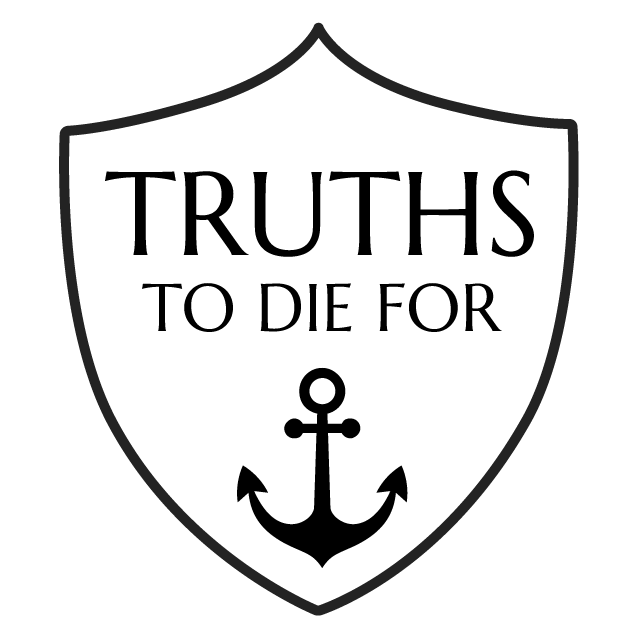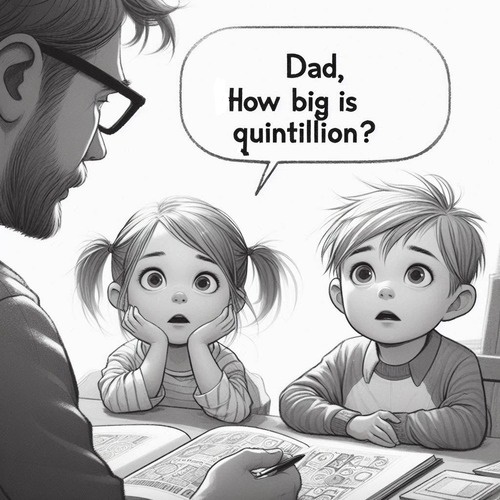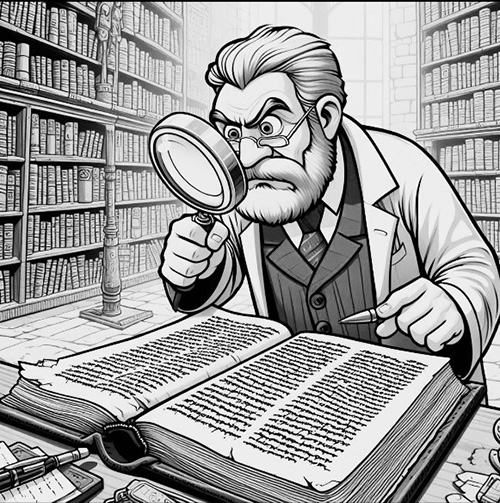The Temple Curtain: What Its Tearing Truly Signifies
In the ancient world, few places were as ‘off-access’ and restricted as the Holy of Holies in the Jewish Temple…
The Holy of Holies was rather like the infamous nuclear chambers of the modern era—often nicknamed WidowMakers—because if you entered with inadequate protection, it would mean certain death. One wrong move, one unauthorised person, one improper approach—and death would result.
Between this most sacred space and the rest of the world hung an elaborate curtain, a divine barrier marking the separation between sinful humanity and the perfect holiness of God. And then, in one dramatic moment as Jesus breathed His last on the cross, that impenetrable curtain tore from top to bottom. But what does all this truly signify?
THE TEMPLE CURTAIN IN THE OLD TESTAMENT
The temple curtain was no ordinary piece of fabric but a divinely designed barrier with precise specifications and profound significance.
Divine specifications from Exodus 26:31-33: God didn’t leave the design to human creativity but prescribed exact details for the curtain. The blue represented heavenly origin, purple signified royalty, and scarlet pointed toward the blood sacrifice, while the cherubim embroidered on it reminded all of the guardians of God’s holiness.
Impressive physical dimensions: According to Jewish tradition, the curtain stood approximately 60 feet high, 30 feet wide, and was the thickness of a man’s hand (about 4 inches).
Separation of holy spaces: The curtain’s primary function was to divide the Holy Place from the Most Holy Place where the Ark of the Covenant resided. This physical division represented the spiritual reality that sinful humanity could not freely approach the perfect holiness of God without mediation and atonement.
Restricted access protocols: Only the high priest could enter beyond this curtain, and only once per year on Yom Kippur (the Day of Atonement). This severe restriction communicated the serious consequences of sin and humanity’s desperate need for proper representation before God.
The high priest’s lifeline: Jewish tradition tells us that when the high priest entered the Holy of Holies, he had a rope tied around his ankle. This precaution existed because if he died in God’s presence due to improper preparation or approach, no one else could enter to retrieve his body—they would have to pull him out by the rope.
WHY GOD INSTITUTED SUCH ELABORATE INSTRUCTIONS
The detailed requirements for the temple curtain weren’t arbitrary but served profound theological purposes. God’s meticulous instructions revealed important aspects of His character and humanity’s condition. The curtain system established a visual theology that every Israelite could understand: God is utterly holy and unapproachable apart from the means He provides. This elaborate arrangement demonstrated both the problem of human sin and God’s provision for reconciliation through a divinely appointed mediator.
The thickness and grandeur of the curtain emphasised the gravity of sin and the impossibility of casual access to God. Yet simultaneously, the very existence of a specified way to enter—albeit restricted—revealed God’s mercy in providing any approach at all. The annual Day of Atonement ritual, when blood was carried beyond the veil, foreshadowed a coming perfect sacrifice that would permanently address the separation problem.
THE MOMENT OF TEARING
The dramatic tearing of the temple curtain marks one of history’s most significant theological turning points—a divine exclamation point to Christ’s sacrifice. This supernatural event carried immediate and eternal implications.
Perfect divine timing: The Gospel writers are careful to note that the curtain tore “at the moment when Jesus gave up his spirit” (Matthew 27:50-51). This precise timing was no coincidence but a divine declaration that Christ’s death directly affected humanity’s access to God.
Top-to-bottom direction: The curtain tore “from top to bottom,” indicating this was God’s action, not human intervention. No human could have initiated such a tear in this massive fabric, especially starting from the inaccessible top portion that stood 60 feet high.
Part of a supernatural cluster: The torn curtain occurred alongside other supernatural events—darkness over the land, earthquakes, and even resurrections of dead saints. This constellation of signs underscored the cosmic significance of Christ’s death as more than just another Roman execution.
Immediate priestly impact: Imagine the priests serving in the temple at that moment—suddenly facing the exposed Holy of Holies with no preparation or protection. The psychological and theological shock cannot be overstated, as centuries of restricted access vanished in a single moment.
Public declaration: While the crucifixion occurred outside Jerusalem’s walls, this sign happened at the religious centre of Jewish life. God ensured His message of a new covenant was not proclaimed only at Golgotha but also in the temple itself.
THE THEOLOGICAL SIGNIFICANCE OF THE TORN CURTAIN
The tearing of the temple curtain represents nothing less than a complete paradigm shift in how humanity relates to God. When that thick barrier split from top to bottom, it visualised the end of the old covenant system and inaugurated a new reality. The writer of Hebrews captures this significance perfectly: (Hebrews 10:19-20).
This dramatic act signalled Christ’s sacrifice accomplished what centuries of animal sacrifices could only symbolise. The separation between God and humanity—represented by that massive curtain—was now removed through Christ’s perfect atonement. No longer would access to God require an earthly high priest as intermediary, for Jesus had become the permanent and perfect High Priest.
The implications extend even further. The entire sacrificial system, with its daily and yearly rituals, found fulfillment and conclusion in Christ’s once-for-all sacrifice. The priesthood expanded beyond the Levitical tribe to include all believers, who now have direct access to God through Christ. The Holy of Holies was no longer a physical location in Jerusalem but became accessible anywhere through prayer. God’s presence would no longer dwell behind an impenetrable curtain but would reside within believers themselves through the Holy Spirit.
REFORMED THEOLOGICAL PERSPECTIVES
The Reformed tradition finds in the torn curtain a powerful affirmation of its central theological commitments and a vivid illustration of God’s sovereign grace in salvation.
Divine sovereignty on display: The tearing from “top to bottom” powerfully illustrates that salvation is entirely God’s initiative. Reformed theology emphasises reconciliation with God begins not with human effort but with divine action—perfectly symbolised by God Himself rending the barrier from heaven’s side downward.
Efficacious atonement: The Reformed emphasis on Christ’s actual accomplishment of salvation (not merely making salvation possible) finds perfect expression in the torn curtain. The barrier wasn’t merely weakened or partially opened but completely torn, representing the comprehensive nature of Christ’s atoning work.
Covenant fulfillment: Reformed covenant theology sees in this moment the transition from old covenant to new—not as a complete break but as fulfillment. The curtain’s tearing visually demonstrates that Christ fulfilled the types and shadows of the Old Testament sacrificial system.
Justification by faith alone: With the barrier removed, believers no longer approach God through ritual acts or priestly mediation but come directly through faith in Christ. This central Reformation doctrine finds powerful illustration in the now-accessible Holy of Holies.
Perseverance guaranteed: Unlike the high priest who needed a safety rope, believers in Christ have complete security in approaching God. The Reformed doctrine of perseverance is beautifully pictured in this contrast—we need no emergency extraction plan because Christ guarantees our standing before God.
CONCLUSION: THE TEMPLE CURTAIN
When that massive temple curtain tore from top to bottom at the precise moment of Christ’s death, it marked the most dramatic visual demonstration of His declaration, “It is finished.” In that supernatural moment, centuries of separation ended. The elaborate system of limited access, annual atonement, and priestly mediation gave way to a new reality where every believer has direct access to God through Christ.
This historical event transforms our daily spiritual experience. No longer must we approach God through intermediaries or wonder if our access is secure. The torn curtain invites us to “approach God’s throne of grace with confidence” (Hebrews 4:16). The same God who once warned of death for improper approach now welcomes us into the Most Holy Place through Christ’s sacrifice.
The temple curtain—once a barrier—has become through its tearing a beautiful symbol of invitation. Where once it declared “keep out,” it now in its torn state declares “come right in.” This is the heart of the gospel: that which separated us from God has been removed by God Himself through the perfect sacrifice of His Son.
THE TEMPLE CURTAIN: RELATED FAQs
Did the tearing of the temple curtain have any immediate historical consequences? Contemporary records suggest the temple priests may have replaced or repaired the torn curtain, attempting to continue the sacrificial system until the temple’s destruction in 70 AD. This illustrates the human tendency to cling to religious systems even after they’ve been divinely superseded. Reformed scholar RC Sproul notes this rejection of Christ’s finished work parallels how we often try to add human effort to what God has completed.
How do contemporary Reformed scholars interpret the symbolism of the curtain materials? Scholars like Michael Horton suggest the blue, purple, and scarlet yarns represent Christ’s heavenly origin, royal status, and sacrificial blood—all elements fulfilled in His person and work. The fine twisted linen represents His perfect righteousness, while the cherubim embroidery recalls Eden’s guardians who blocked access after the Fall. This rich symbolism points to Christ as the one who restores what was lost in Eden.
Was the temple curtain’s tearing reported in any non-biblical sources? No direct non-biblical confirmation of the curtain’s tearing exists, though the Jewish Talmud does mention unusual events in the temple during the final 40 years before its destruction (30-70 AD). Reformed historian Richard Gaffin notes the lack of explicit denial from temple authorities is significant given how this would have been a public event affecting temple operations. The absence of historical refutation suggests the event was widely known and difficult to dismiss.
How does Hebrews connect Christ’s flesh with the temple curtain? Hebrews 10:19-20 makes the profound connection that Christ’s body (specifically His flesh) was itself the true curtain through which believers now have access to God. Reformed theologian Edmund Clowney explains Christ’s torn flesh on the cross corresponds to the torn temple curtain—both were necessary for access to God’s presence. This parallel reveals the physical curtain was always pointing toward Christ as the true mediator between God and humanity.
How do different Reformed traditions interpret the timing of the curtain’s tearing? While all Reformed traditions agree on the theological significance, some scholars like John Frame emphasise the curtain tore at the moment of death to show immediate justification, while others like Sinclair Ferguson emphasise it occurred before Christ’s “It is finished” declaration to show progressive revelation. Both perspectives affirm the central truth that Christ’s work, not our own, removes the barrier between God and humanity.
What significance does the torn curtain have for believers’ prayer life? Kevin DeYoung and other contemporary Reformed teachers highlight that the torn curtain fundamentally transforms our prayer approach—we now enter God’s presence with confidence rather than fear. The practical implication is that believers can approach God directly without human priests, special locations, or ritual preparations. This truth should make our prayers both more frequent and more confident.
Did the physical design of the Second Temple curtain differ from the original tabernacle specifications? Historical and archaeological evidence suggests Herod’s temple likely featured an even more elaborate curtain than the original tabernacle design, with some Jewish sources claiming it was replaced annually and required hundreds of priests to handle. Tim Keller notes this increasing elaboration parallels how religious systems often grow more complex over time, while God’s plan was moving toward the simplicity of direct access through Christ.
THE TEMPLE CURTAIN: OUR RELATED POSTS
Editor's Pick

GPS Without Eyes: How Ants Silently Shout Intelligent Design
Picture a leafcutter ant navigating the rainforest floor in pitch darkness, carrying a leaf fragment 50 times its body weight. [...]

Born Broken: Why Must We Affirm Original Sin?
Imagine a world where we’re born neutral—free to choose good, and without a bias toward evil. Sounds appealing… until we [...]

Does God Truly Care About My Everyday Choices?
OWe believe God created the universe. We believe He orchestrated the exodus from Egypt and raised Jesus from the dead. [...]
SUPPORT US:
Feel the Holy Spirit's gentle nudge to partner with us?
Donate Online:
Account Name: TRUTHS TO DIE FOR FOUNDATION
Account Number: 10243565459
Bank IFSC: IDFB0043391
Bank Name: IDFC FIRST BANK






